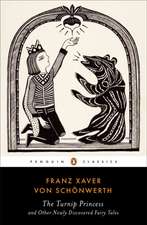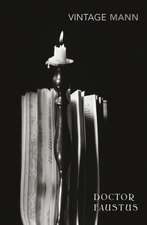Death in Venice: And Seven Other Stories
Autor Thomas Mann Traducere de H.T. Lowe-Porteren Limba Engleză Paperback – 28 feb 1989
| Toate formatele și edițiile | Preț | Express |
|---|---|---|
| Paperback (6) | 44.75 lei 6-8 săpt. | |
| CreateSpace Independent Publishing Platform – | 63.61 lei 3-5 săpt. | |
| Penguin Books – 30 apr 1999 | 78.77 lei 3-5 săpt. | |
| HarperCollins Publishers – 30 mai 2005 | 107.55 lei 3-5 săpt. | |
| Neeland Media – 11 iun 2018 | 44.75 lei 6-8 săpt. | |
| Stellar Editions – 7 mar 2016 | 59.38 lei 38-44 zile | |
| Simon & Brown – 25 sep 2018 | 84.39 lei 38-44 zile | |
| Hardback (3) | 121.53 lei 6-8 săpt. | |
| Ancient Wisdom Publications – 14 noi 2021 | 121.53 lei 6-8 săpt. | |
| Simon & Brown – 25 sep 2018 | 142.03 lei 38-44 zile | |
| True Sign Publishing House – 21 ian 2023 | 157.62 lei 6-8 săpt. |
Preț: 80.22 lei
Nou
Puncte Express: 120
Preț estimativ în valută:
15.35€ • 16.03$ • 12.68£
15.35€ • 16.03$ • 12.68£
Carte indisponibilă temporar
Doresc să fiu notificat când acest titlu va fi disponibil:
Se trimite...
Preluare comenzi: 021 569.72.76
Specificații
ISBN-13: 9780679722069
ISBN-10: 0679722068
Pagini: 402
Dimensiuni: 133 x 204 x 19 mm
Greutate: 0.3 kg
Ediția:Vintage Intl.
Editura: Vintage Books USA
ISBN-10: 0679722068
Pagini: 402
Dimensiuni: 133 x 204 x 19 mm
Greutate: 0.3 kg
Ediția:Vintage Intl.
Editura: Vintage Books USA
Descriere
Mann's bestselling work of fiction now appears in a trade paperback format with a striking new jacket. Sales of the classic have totaled over 800,000 copies and average 42,000 copies a year.
Notă biografică
Textul de pe ultima copertă
The world-famous masterpiece by Nobel laureate Thomas Mann -- here in a new translation by Michael Henry Heim
Published on the eve of World War I, a decade after Buddenbrooks had established Thomas Mann as a literary celebrity, Death in Venice tells the story of Gustav von Aschenbach, a successful but aging writer who follows his wanderlust to Venice in search of spiritual fulfillment that instead leads to his erotic doom.
In the decaying city, besieged by an unnamed epidemic, he becomes obsessed with an exquisite Polish boy, Tadzio. "It is a story of the voluptuousness of doom," Mann wrote. "But the problem I had especially in mind was that of the artist's dignity."
Published on the eve of World War I, a decade after Buddenbrooks had established Thomas Mann as a literary celebrity, Death in Venice tells the story of Gustav von Aschenbach, a successful but aging writer who follows his wanderlust to Venice in search of spiritual fulfillment that instead leads to his erotic doom.
In the decaying city, besieged by an unnamed epidemic, he becomes obsessed with an exquisite Polish boy, Tadzio. "It is a story of the voluptuousness of doom," Mann wrote. "But the problem I had especially in mind was that of the artist's dignity."
















